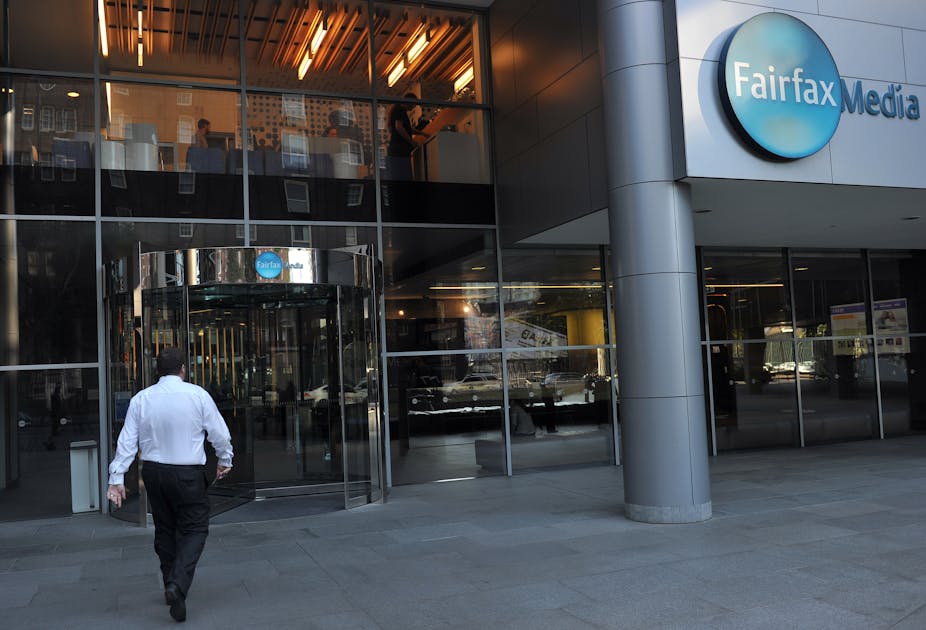As a graduate student at the University of Sydney in the 1980s, I worked with a professor who had over 15 years of copies of The Economist in his office. Stacked from floor to ceiling in the corner office, they made for an impressive sight.
But there were downsides to this remarkable collection. It was a fire hazard, an issue that was accentuated by the professor’s propensity to smoke in his office. The pile of magazines in the office were also less useful than they first appeared. For instance, if the professor wished to check on how The Economist reported on the 1973 oil crisis, he would have required assistance from his colleagues to dismantle this stack in order to find the volume in question.
In light of the enormous digital databases that now exist, such practices appear quaint. But they remind us that the Age of Digital is a quite recent one, and it exists alongside a much longer Age of Paper.
Commentary following Fairfax’s announcement that Fairfax will shed 1900 jobs has focused on missed opportunities to transition to digital while retaining the reputation of its long-established mastheads, The Age and Sydney Morning Herald. Important as these debates are, the Fairfax action has raised new issues about the future of news in Australia.
After years of ambivalence, Fairfax management have now embraced paywall access for The Age and SMH from early 2013. It is anticipated that they may adopt a two-tiered approach similar to that of The New York Times, with a mix of free content available on a metered basis and subscriber-only content.
In the Australian context, this means that the future of commercial news media online will be largely subscription-based and advertiser-supported, rather than free to all users and funded by on-site advertising - the model of the 2000s.
With News Limited and Fairfax now deciding that the future of professionally produced news content lies with user payment, the spotlight is thrown to the public service media organisations, the ABC and SBS. The ABC in particular is often accused of over-reach in the online space, with The Australian raising the concern that its cross-platform news media operations may crowd out commercial publishers.
There is no clear answer as to what the optimal role is for a public service media organisation in a convergent media environment. Calls to roll back the ABC’s influence will most likely be connected to some form of public value test akin to those now being applied to proposals for new BBC services in the UK. Paradoxically, talk of “crowding out” and “public value tests” is an indicator of the ABC’s success in the online space.
Whatever criticisms are made of sites such as The Drum and Unleashed, they come out of clear evidence that a lot of people are viewing them. If they are taking eyeballs from the News and Fairfax mastheads, maybe there is more merit in learning from them than from trying to curtail them. The Fairfax sites were slow, for instance, in opening up to user comments on their opinion pieces.
In terms of producing news, the ABC will most likely become the anchor point for what we can term “generic” or “commodity” news. It will continue to be expected that the ABC provide a comprehensive news service across all media platforms for free, for reasons related to equitable access, national reach, and the information needs of citizens.
The point can also be made that the services are not in fact free – they have already been paid for in taxes – so any attempt to charge for access to such news can be seen as “double dipping”, while also denying basic media services to lower-income earners. It will be difficult to change this basic news provision role for the ABC.
The big question for Fairfax is what content they want their paywall-protected The Age and SMH sites to contain. As noted on this site, both sites are currently a confusing blancmange of investigative stories, fashion photos, sex tips, celebrity gossip, local news, opinion pieces, sports results, and updates on reality TV shows.
Claims the Fairfax mastheads are committed to “quality journalism” are routinely challenged by the most cursory glance at these online sites. Moreover, most content is readily accessible elsewhere, be it on specialist gossip sites such as Gawker and TMZ, on blogs, or sites such as Mamamia. Fairfax has not gone down the path of having a catch-all free site along the lines of news.com.au.
Fairfax will have two related priorities with re-launching its online sites: uncluttering its content pages and deciding what it won’t be reporting on, and identifying more clearly who its paying readership are likely to be and what they are uniquely seeking from Fairfax sites. Unfortunately, these two decisions will be accompanied by job losses for Fairfax journalists.

